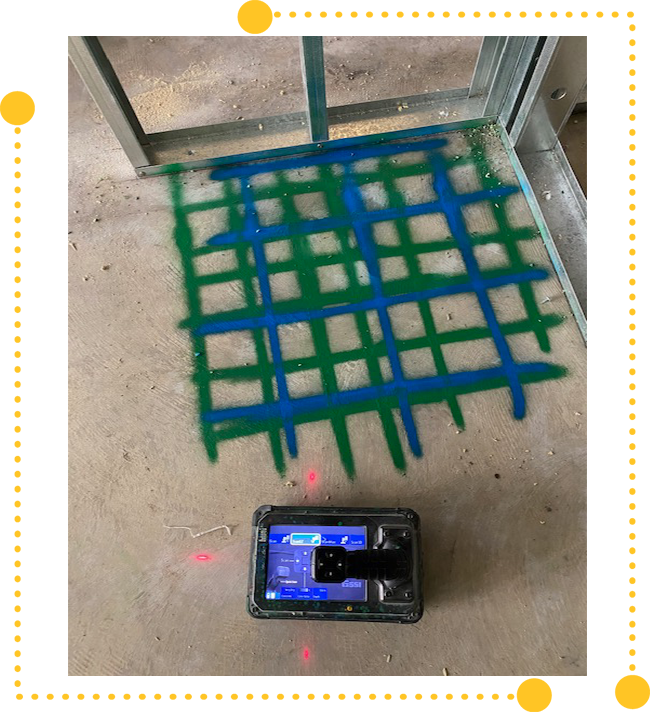Concrete Scanning: A Vital Action In The Direction Of Making Certain Architectural Stability and Safety
In the world of construction and infrastructure upkeep, the significance of concrete scanning can not be overstated. By using innovative technology and methods, concrete scanning offers as an essential tool in making sure that the stability and security of bridges and buildings are promoted to the highest criteria.
Relevance of Concrete Scanning
Concrete scanning plays a critical duty in making certain the architectural integrity and safety and security of structures and infrastructure jobs. By utilizing innovative modern technologies such as ground-penetrating radar (GPR) and electro-magnetic induction, experts can non-destructively evaluate concrete frameworks to spot potential flaws, voids, embedded things, and reinforcement format. This process allows very early detection of abnormalities that might endanger the security of a framework, avoiding costly problems and guaranteeing the security of passengers.
Before boring, reducing, or coring into concrete, scanning assists recognize the exact places of rebar, post-tension wires, and other ingrained elements, lowering the danger of accidental hits that might lead to structural weak points. Additionally, concrete scanning aids in top quality control by confirming the thickness of concrete covers and spotting any kind of disparities that might impact the general resilience of the structure.
Modern Technology for Concrete Examination

Benefits of Very Early Detection
Timely discovery of architectural concerns can considerably mitigate risks and make sure the longevity of building jobs. By recognizing potential issues early on in the building process, stakeholders can take aggressive measures to resolve issues before they intensify right into larger and extra expensive problems. Among the essential advantages of very early detection is the avoidance of structural failures, which can pose significant safety and security dangers and bring about job delays and financial losses.
Additionally, very early detection enables timely fixings and maintenance, which can aid extend the lifespan of the framework. By addressing issues immediately, construction groups can prevent costly repair work and even the demand for early substitute of structural parts. This proactive technique not just saves money and time but likewise boosts the total safety and sturdiness of the building and construction project.
Additionally, early detection can boost job preparation and decision-making by offering stakeholders with valuable understandings right into the problem of the framework. Armed with this details, project supervisors can make informed options pertaining to building and construction timelines, products, and methods, resulting in extra effective and effective job outcomes.
Making Certain Structural Security
Making sure the architectural stability of a building and construction task is vital to its security why not try these out and durability. Concrete scanning plays a crucial function in making sure architectural security by identifying possible concerns such as voids, delamination, or support deterioration that could compromise the honesty of the structure over time.
By utilizing innovative scanning technologies like ground-penetrating radar (GPR) and electro-magnetic induction, building specialists can non-invasively check concrete structures to identify locations of concern below the surface area. This positive technique enables the very early discovery of weaknesses or problems, making it possible for punctual fixings or reinforcement to stop architectural failures.
Routine concrete scanning during different building phases and throughout the life cycle of a structure can aid preserve its security, alleviate dangers, and make sure the security of residents. By prioritizing structural stability with concrete scanning, building tasks can boost their strength and toughness, eventually adding to better safety and security and longevity.

Preventing Critical Failings
To safeguard against tragic events, thorough surveillance and positive maintenance are crucial in preventing vital failures within structural frameworks. Identifying possible issues before they intensify is essential to stop structural failures. Executing routine inspections, such as concrete scanning, can expose hidden problems like gaps, splits, or rust that could compromise the honesty of a framework. By utilizing sophisticated scanning technologies like Ground Passing through Radar (GPR) or Concrete X-ray, designers can non-destructively examine the problem of concrete and determine weak points that need reinforcement or repair work - RainierGPR Service Areas.

Conclusion
Finally, concrete scanning plays a have a peek here crucial duty in making sure architectural integrity and safety by utilizing innovative innovation for early discovery of prospective issues. This positive strategy aids stop critical failures and makes certain the security of frameworks. It is important to focus on concrete examination as a typical technique to secure the durability and safety of structures and infrastructure.
Concrete scanning plays an important duty in ensuring the structural stability and security of buildings and framework projects. In addition, concrete scanning help in top quality control by confirming the density of concrete covers and detecting any kind of disparities that might impact the general resilience of the framework. Concrete scanning plays a crucial duty in making certain structural security by identifying potential concerns such as voids, delamination, or reinforcement rust that can endanger the honesty of the structure over time.

In conclusion, concrete scanning plays an important function in making certain structural honesty and security by using innovative technology for very early discovery of prospective concerns.